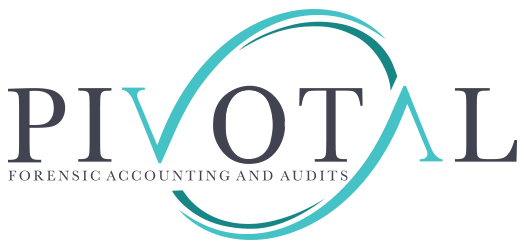Year-End Tax Change Summary
Year-End Tax Change Summary
As we method the quilt of 2023, it turns into crucial for each person and company to live updated on tax policies. There were adjustments, such as adjustments to the reporting threshold for 1099 K, corrections in the 1040 form, and updates to the Employee Retention Credit (ERC) and Corporate Transparency Act. These adjustments highlight the evolving panorama of the year. Navigating through those updates is critical for being organized and strategically planning for the financial transition. In this international conversion of tax regulations, it is vital to remain knowledgeable and vigilant to ensure a smooth transition into the subsequent year.
1. Implications of the 1099-K Reporting Threshold Delay
The IRS’s preference to defer the introduction of the brand new $600 Form 1099-K reporting threshold resonates profoundly throughout the financial panorama. Initially slated for the tax year 2023, this obligation has been rescheduled to the tax year 2024, with reporting predicted in January 2025. An exploration of the repercussions of this postponement on 1/3-celebration fee organizations, everyday fee apps, and online marketplaces famous for a nuanced effect.
Delving deeper, comprehend the phased integration of the $ 5,000 threshold in 2024 and its implications on reporting stipulations and financial strategizing. This put-off activates a meticulous evaluation of the evolving tax framework, guiding stakeholders in adapting to approaching adjustments.
2. Unpacking Manual Corrections in the 1040 Form
A pivotal correction on web page 34 of the 1040 In-Depth Manual has refined an essential assertion, now articulating, “The credit is nonrefundable and do now not deliver ahead if unused.” This adjustment warrants a deeper exploration into the intricacies surrounding nonrefundable tax credits, unraveling their implications for taxpayers.
Understanding the aftermath of this correction is paramount for greed and the way it influences the potential to carry ahead unused credits. This illumination sheds light on important issues for tax liabilities and strategic planning, emphasizing the need for taxpayers to evolve their method in reaction to these nuanced adjustments inside the tax panorama.
3. ERC Claim Withdrawals: A Critical Analysis
In response to mistakes in submitting Employee Retention Credit (ERC) claims, the IRS has instituted a pathway for withdrawal via Form 941-X. Navigating this technique requires a radical exploration, delving into the intricacies of the withdrawal process, the underlying motives prompting withdrawal, and proactive measures available to individuals and groups in search of rectifying faulty claims.
This segment offers a comprehensive analysis of ERC claim withdrawals, shedding light on their implications for businesses immersed within the difficult panorama of tax compliance. Understanding the withdrawal dynamics becomes vital for agencies aiming to ensure certain accuracy, compliance, and economic prudence of their ERC claims.
4. A Special Course Preview
Discover the intricacies of ERC and declare withdrawals and voluntary disclosures in our upcoming direction on January 10 and 24. This preview gives taxpayers a unique glimpse into the fabric, ensuring thorough preparation for navigating the complexities of resolving ERC disputes. Gain insights into the standards, techniques, and complexity of powerful claim withdrawals and voluntary disclosures.
This possibility equips individuals with the expertise to address ERC-associated challenges optimistically. Be well-organized for the intricate surroundings of compliance with a comprehensive understanding of the approaches essential for a hit resolution. Join us for a targeted exploration of ERC intricacies and beautify your capability in this crucial area.
5. Corporate Transparency Act
The Corporate Transparency Act indicates a big trade in reporting duties, significantly impacting organizations mounted on or after 1/1/2024. The extended 90-day reporting closing date presents sensible implications, requiring a swift and comprehensive response from affected entities. Challenges arise with the behind-schedule release of the reporting form and particular identifier page, complicating compliance efforts.
Preparedness is vital as organizations ought to navigate those changes successfully, staying abreast of evolving regulatory landscapes. Highlighting the importance of proactive measures, companies ought to prioritize expertise and adapting to the new requirements. Compliance will become paramount to mitigate risks and make sure a clean transition within the dynamic regulatory environment.
6. Small Business Destruction Act
The Small Business Destruction Act poses risks for small corporations, mainly in the event that they nonetheless want to document the desired form. Lacking comfort in reporting necessities or consequences exacerbates the task. The impact on corporations could be intense. This segment examines the need for remedies and strategies to navigate effectively through those challenges. Small groups ought to proactively cope with compliance to mitigate dangers and ensure resilience in the face of stringent policies.
7. Fin Cen’s List of Entities
FinCEN’s disclosure of a list of entities with entry to distinctly private data raises big privacy issues. This release has profound implications for groups and individuals because it probably exposes touchy records. The impact on privacy ought to lead to reputational damage, identification theft, and different security threats. In reaction, organizations must beautify facts and safety measures, put in force strong cybersecurity techniques, and live vigilance in an evolving regulatory landscape. Proactive efforts to shield sensitive statistics are imperative to mitigate risks and preserve belief in an environment in which privacy and security are paramount.
8. Planning Smartly in a Changing Tax Environment
As we navigate through various adjustments and updates inside the tax landscape, a comprehensive roadmap for knowledgeable preparedness is essential. Stay abreast of regulatory changes, adapt proactively, and ensure financial achievement and compliance within the evolving tax environment. Key takeaways encompass understanding ERC declaration withdrawals, the impact of the Corporate Transparency Act, and capacity dangers below the Small Business Destruction Act.
For effective navigation, prioritize well-timed reporting, compliance, and robust records protection measures. Emphasize non-stop studying, engage with dependable sources, and consider expert advice. Let this guide be your compass inside the complex terrain of tax regulations for success in 2024 and beyond.
In Conclusion
The yearend tax adjustments of 2023 usher in a dynamic generation for taxpayers and agencies. From not-on-time thresholds to ERC declaration modifications and the revealing of the Corporate Transparency Act, navigating those shifts demands diligence. The roadmap provided equips people and firms with the understanding to traverse the evolving tax landscape correctly. As we embody 2024, staying informed and proactive remains paramount. Utilize the insights received from this complete guide to not only meet regulatory demands but also to strategize for economic proper-being. In the world of taxation, understanding isn’t always simply electricity – it’s the compass guiding you toward monetary success.


